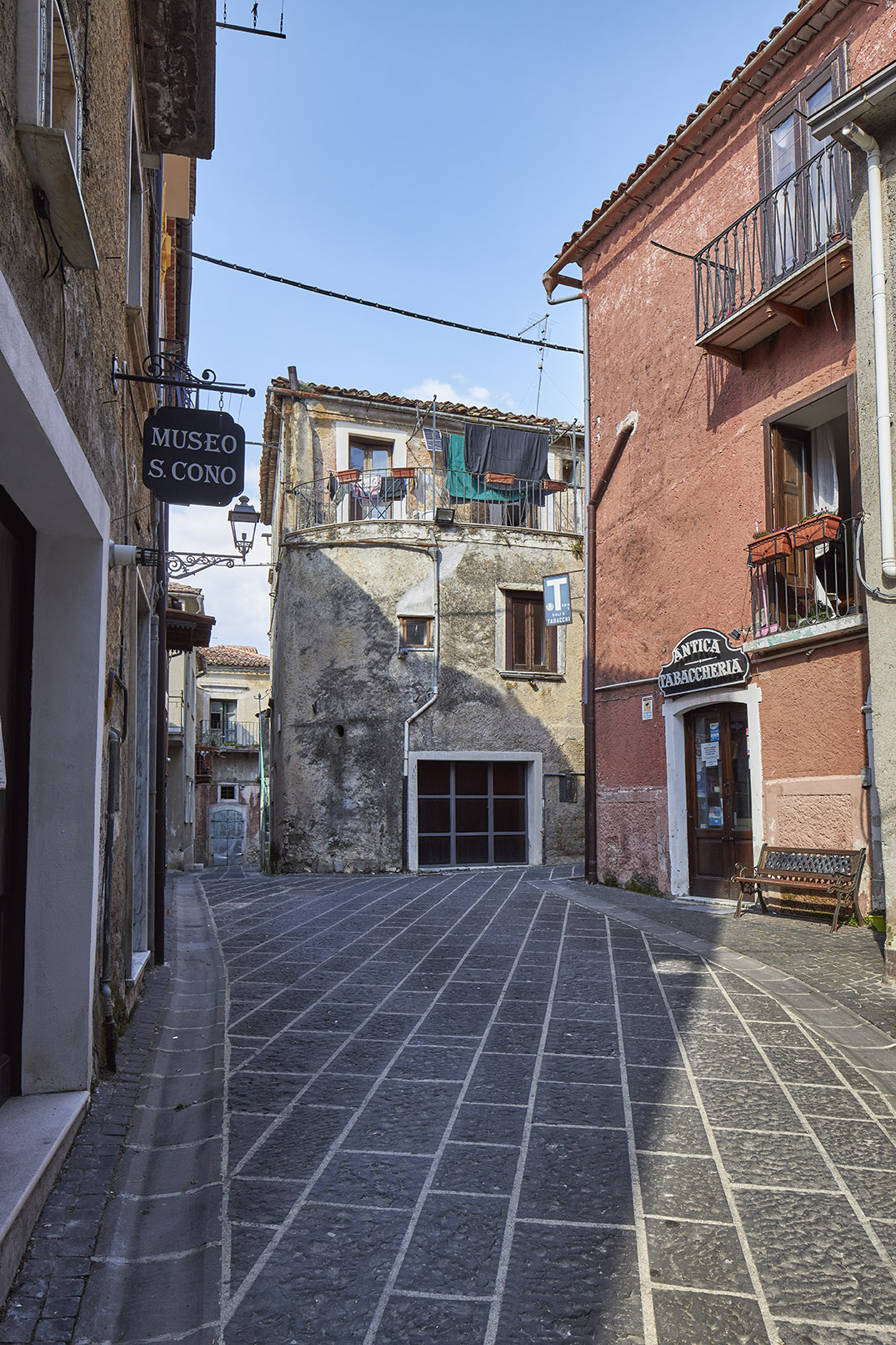The Cilento Fortress
Famous throughout the world for its medieval village perfectly preserved and perched on an isolated hill , the Municipality of Teggiano is also part of the National Park of Cilento, Vallo di Diano and Alburni .
As a whole, this large area is recognised as a World Heritage Site by UNESCO, thanks to both its extraordinary naturalistic variety and to the presence of famous monumental and archaeological sites, such as the Certosa di Padula and the Archaeological Park of Paestum and Velia.
History
The founding of Teggiano has been alternately attributed to the colonists of the Greek city of Tegea, to the Osco-Sabellian populations and finally to the Lucanians at the beginning of the fourth century BC. After probably being destroyed by Alaric, king of the Visigoths who in 410 AD led the Sack of Rome, the city took the name of Dianum, then Diano, from which the homonymous Vallo took its name.
The town later became the privileged place of several powerful Norman families who participated, in 1485, in the famous Conspiracy of the Barons, plotted by Antonello Sanseverino, Prince of Salerno, against Ferrante I of Aragon, King of Naples. When the conspiracy failed, Teggiano became the refuge of the rebel Prince, who was certain that the fortress could not be conquered. His predictions came true: the siege of the Aragonese lasted for several weeks and the capitulation took place only following diplomatic negotiations that ensured Sanseverino would be guaranteed asylum in other cities. When the Sanseverinos left, Teggiano became a fiefdom of other families of the Kingdom of Naples, who administered it with mixed fortunes.
The change of name from Diano to Teggiano was imposed by the newborn Italian state in 1862, which had ordered the municipalities of the Vallo di Diano to avoid using the same name as other towns and areas of Italy. The change was strongly opposed, so much so that even today many continue to use the old name, saying, in dialect: " vàu a Dianu " or " nta Rianu ".
The Municipality of Teggiano can boast the local production of a highly appreciated liqueur: the Amaro Teggiano. This artisanal product, free of preservatives and stabilisers, is created thanks to a hydro-alcoholic solution, cold infused, of aromatic and medicinal herbs typical of the Cilento lands.
Balanced between sweet and bitter, the flavour of this liqueur refers to floral and herbaceous essences, among which the orange blossom aftertaste stands out. A flagship of local food and wine craftsmanship, in short, which draws on the essences of Cilento and then proposes them in the form of a product of excellence. Other local products are the Christmas Eve Stews, prepared with spaghetti, salted anchovies, raisins, breadcrumbs and olive oil; there are also the Parmatieddi, a particular shape of traditional fresh pasta for Palm Sunday lunch; and finally Pizzichinu, a typical Easter cake.
Teggiano is also the scene of a splendid historical re-enactment , one of the richest and most meticulous in Italy: "At the table of Princess Costanza". This medieval festival originated in 1994 thanks to the local Pro Loco and takes place in the Macchiaroli Castle, which historically belonged to the powerful Sanseverino family. During the three days of the event, the small town of Salerno goes back in time, to the days of the conspiracy of the barons who tried to overthrow the Aragonese who had settled on the throne of the Kingdom of Naples. The event attracts thousands of visitors every year, eager to relive the ancient glories of the medieval era, including local cuisine, music, processions and historical reconstructions of actual events, such as the wedding between Costanza da Montefeltro, daughter of the Duke of Urbino Federico, and Antonello Sanseverino, prince of Salerno and lord of Diano; or the siege of Teggiano in 1497 by the Aragonese, which sees roughly 150 figures re-enact the battle perfectly with armour, weapons and fireworks.

